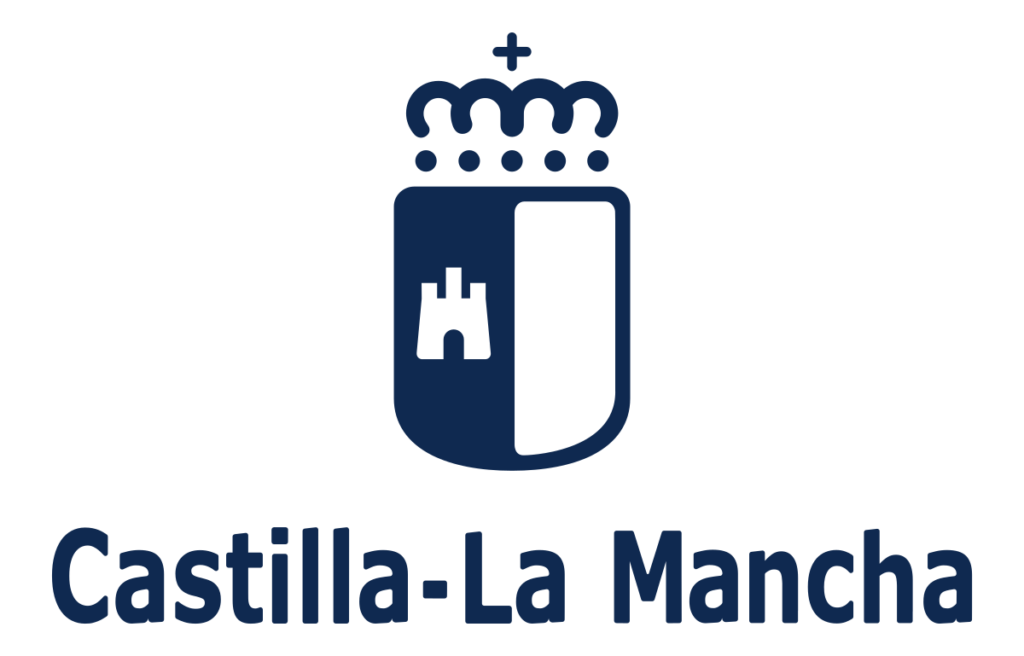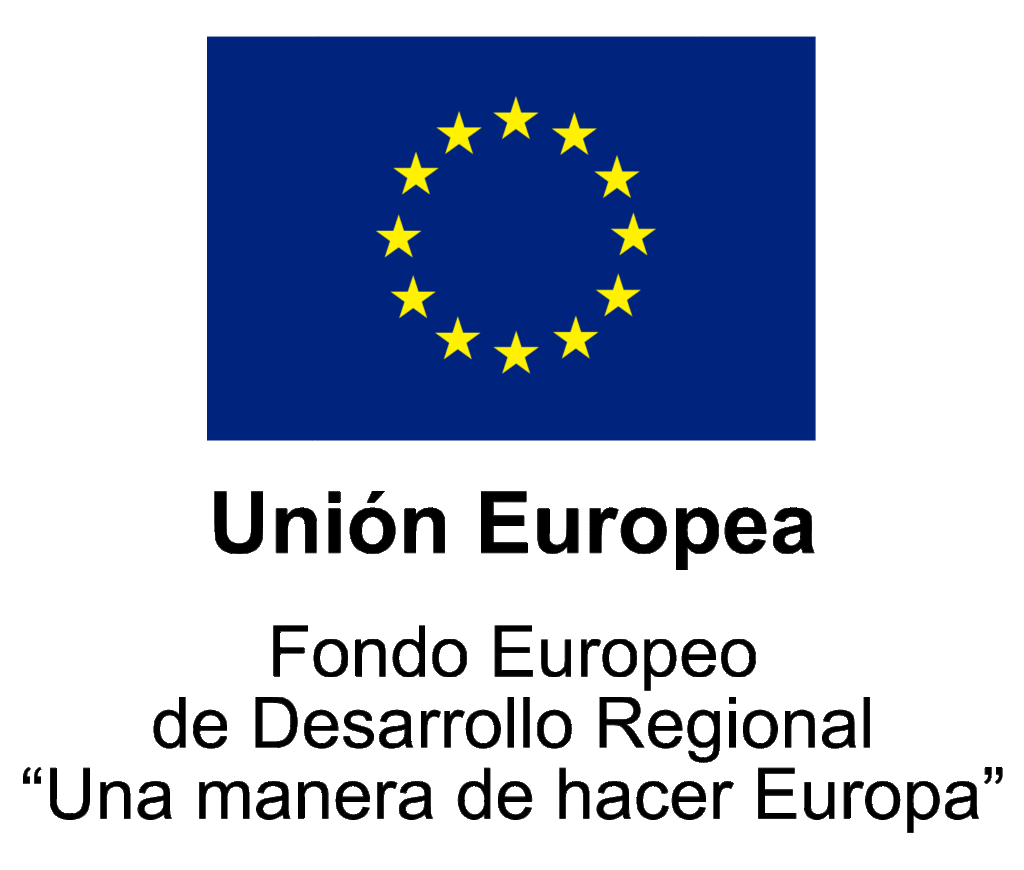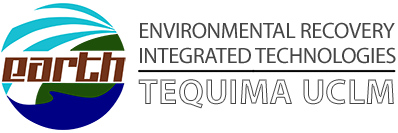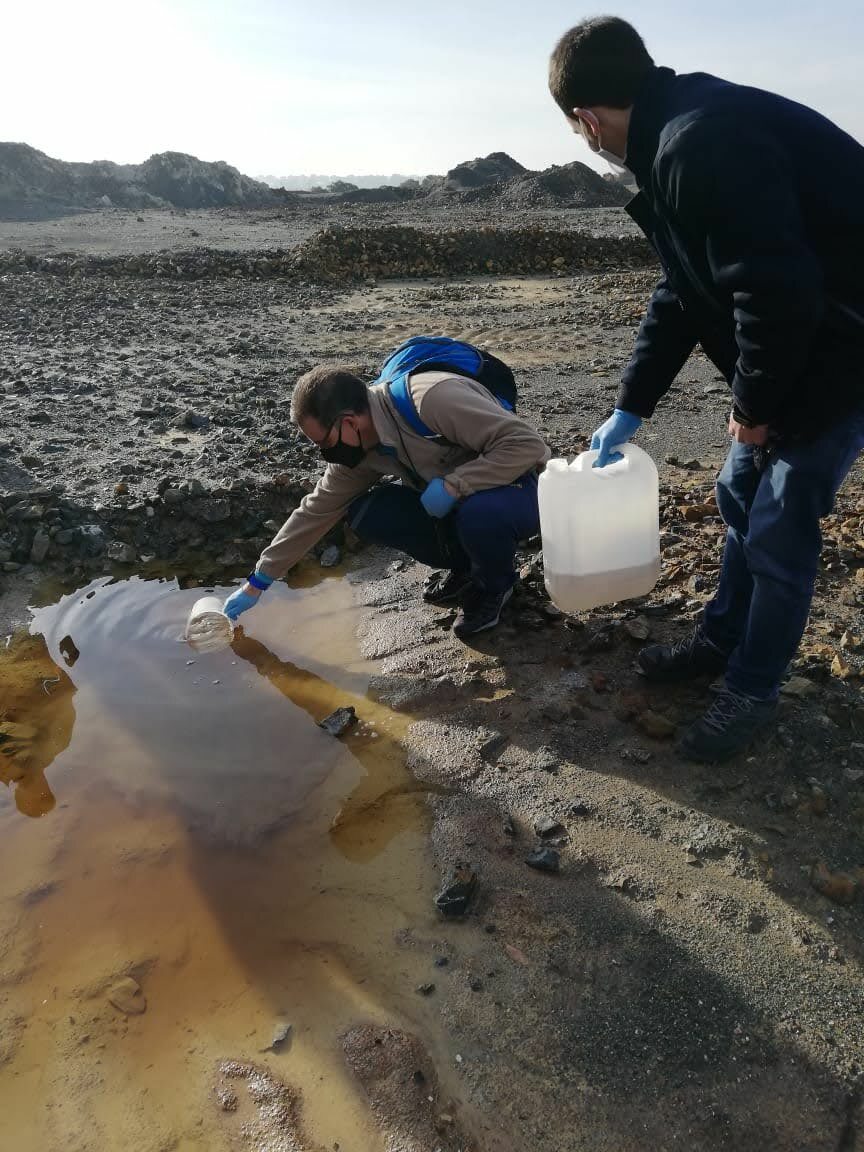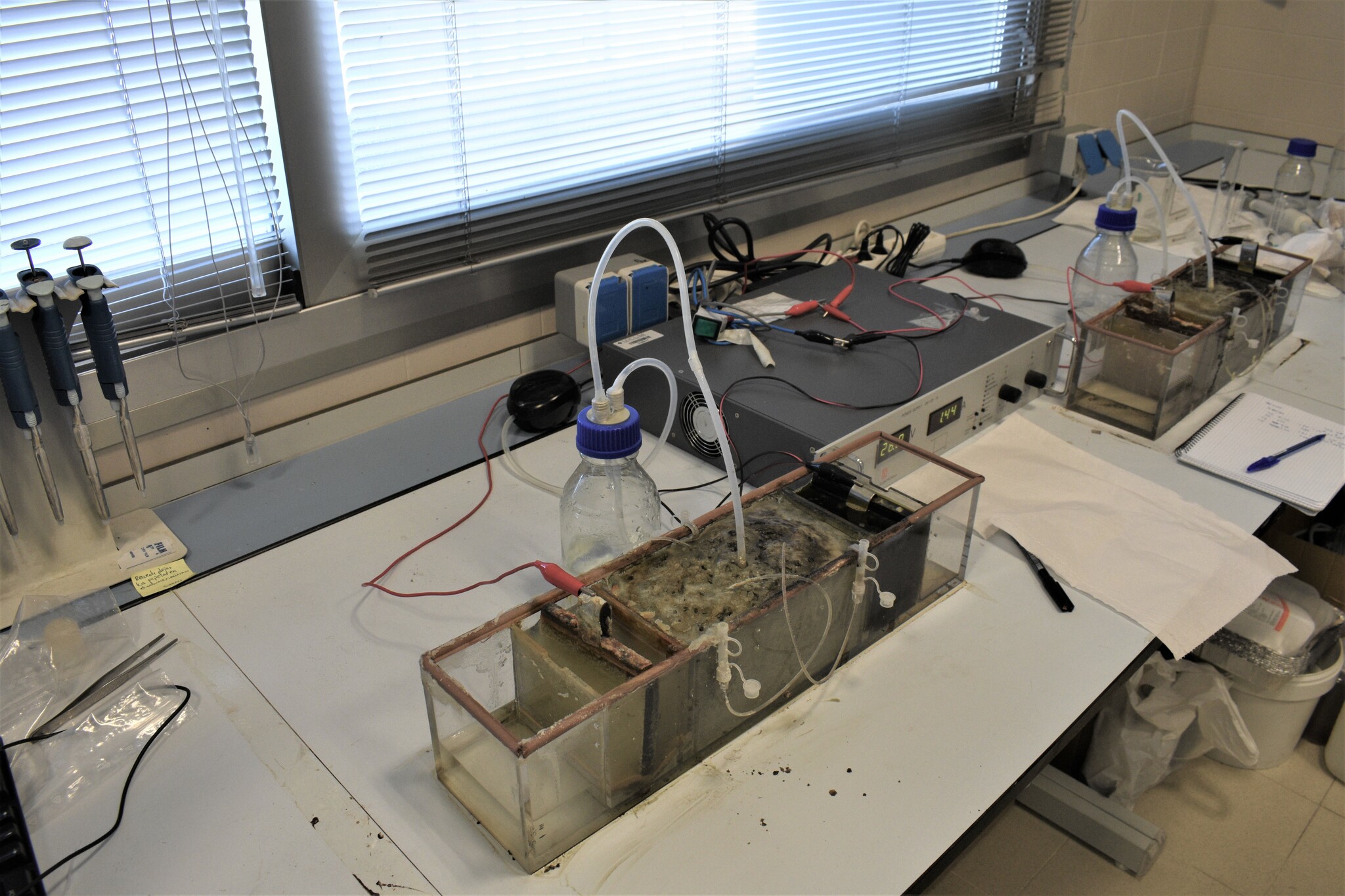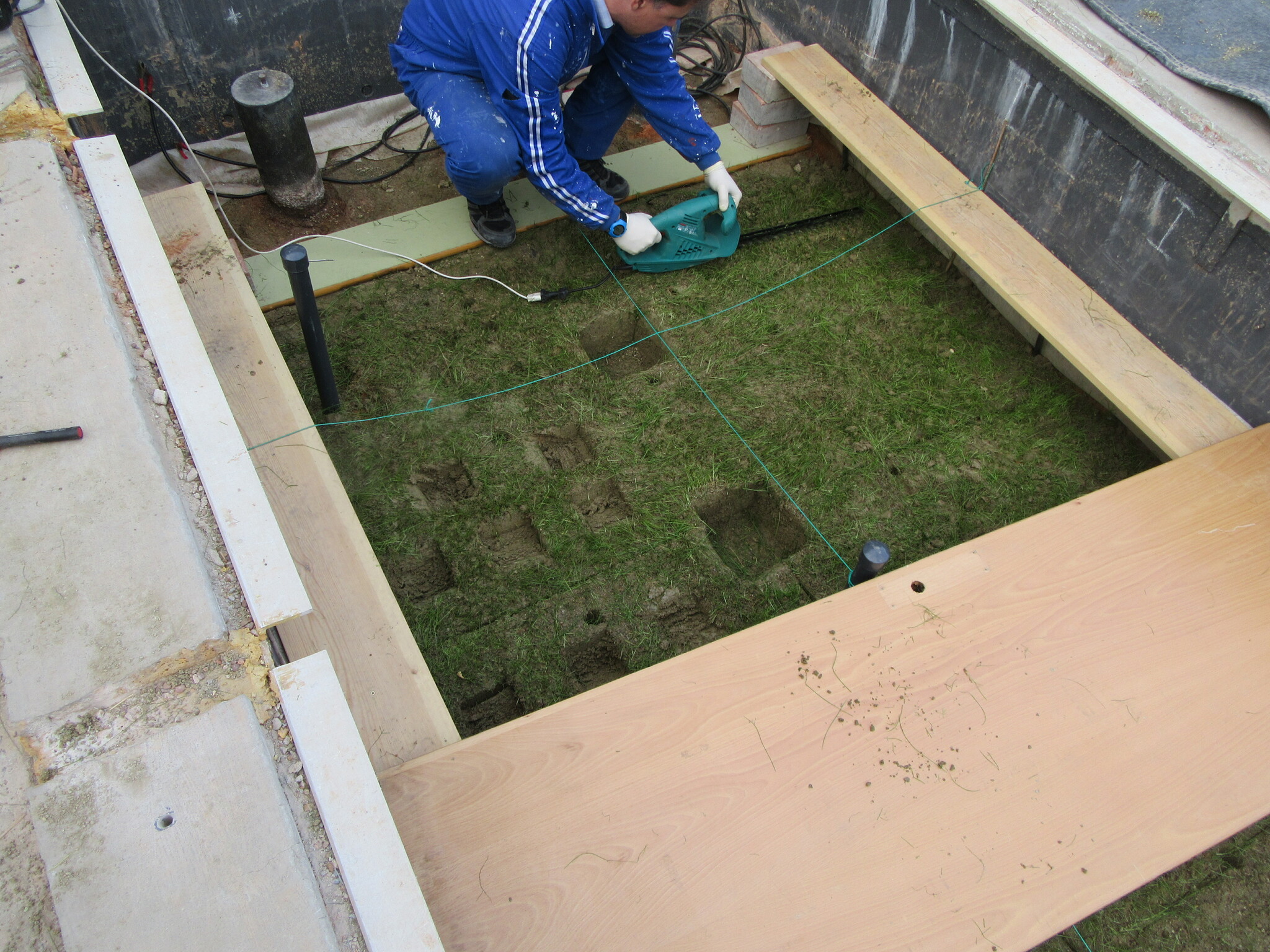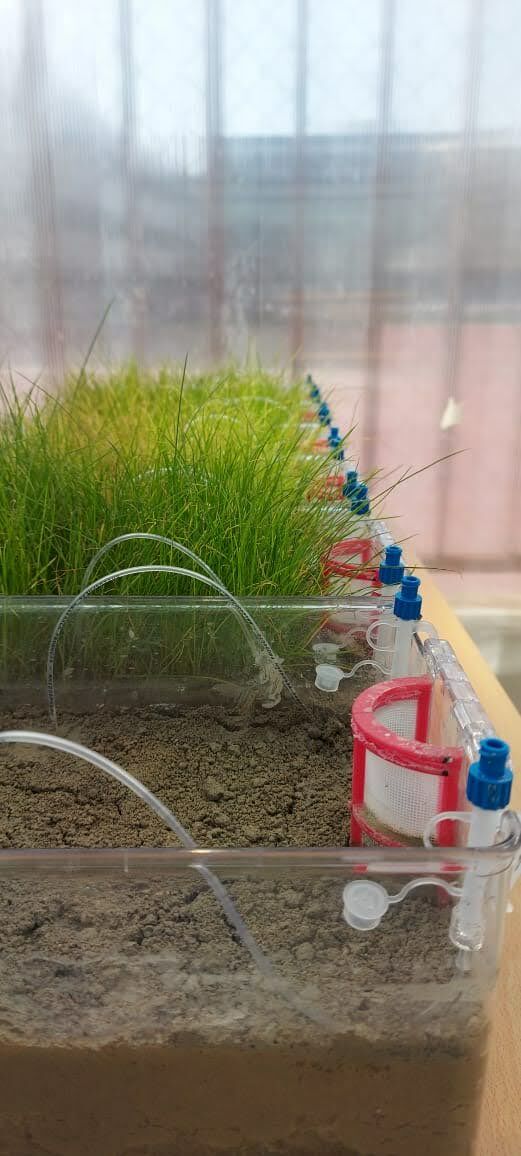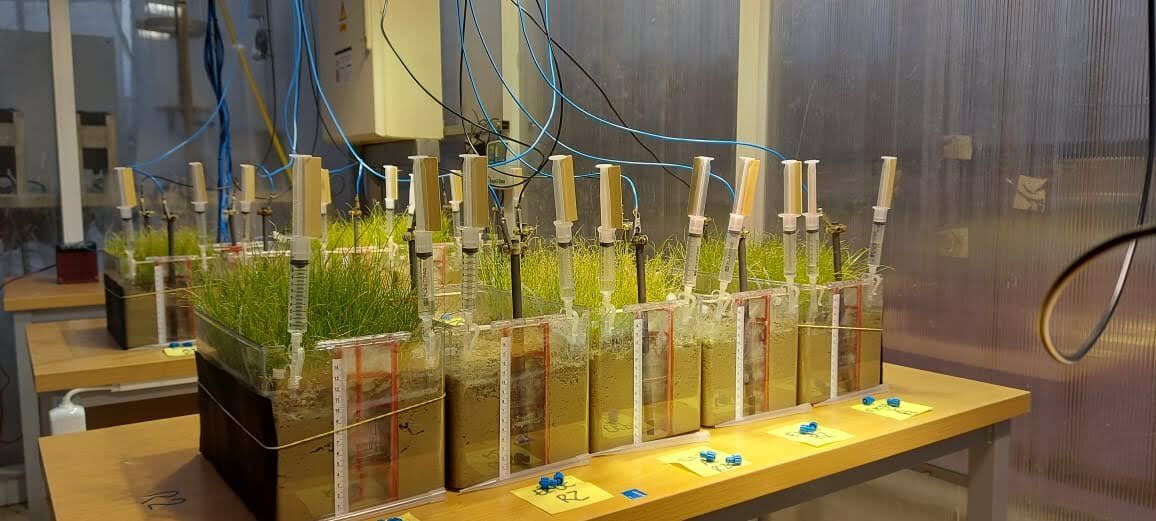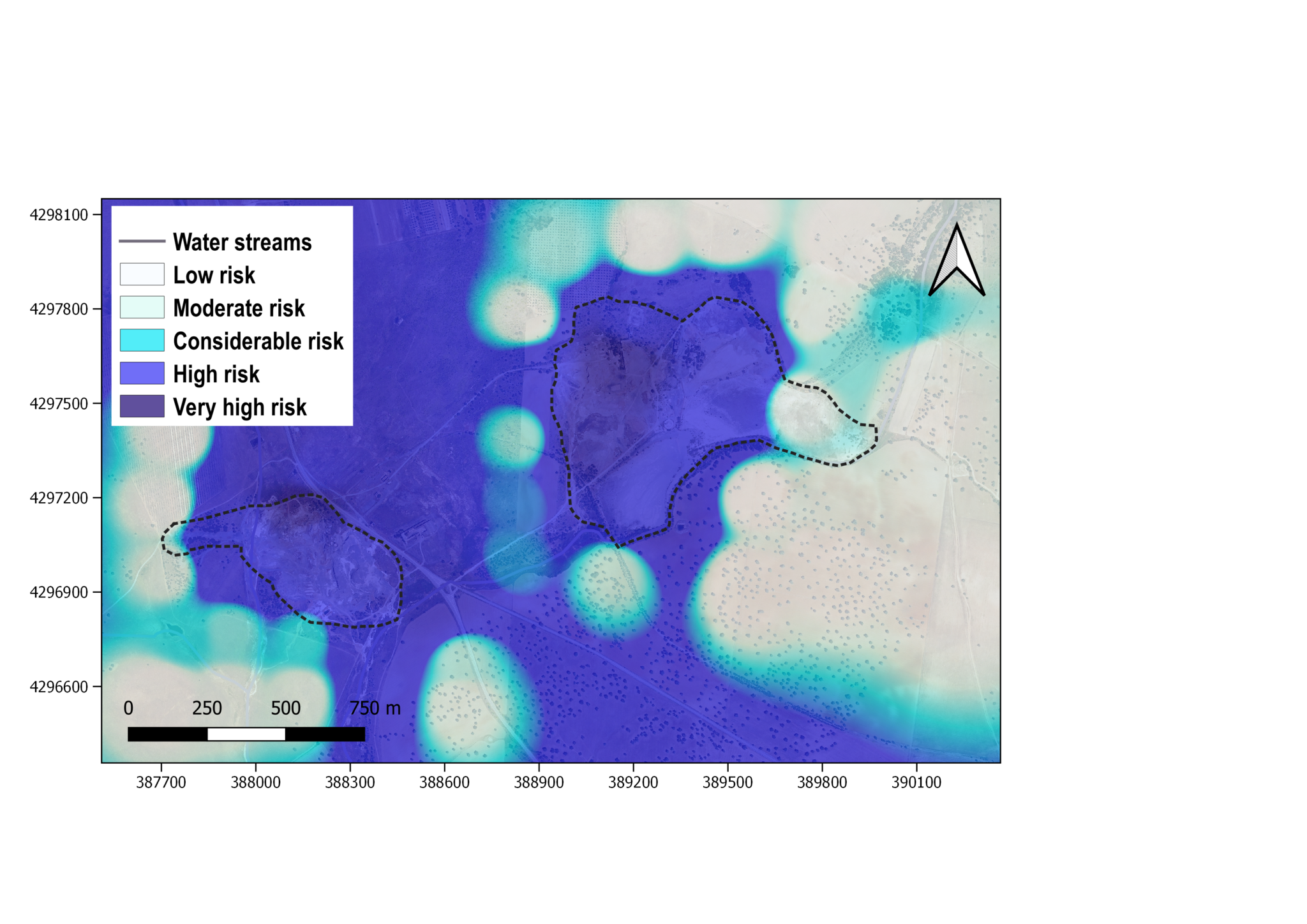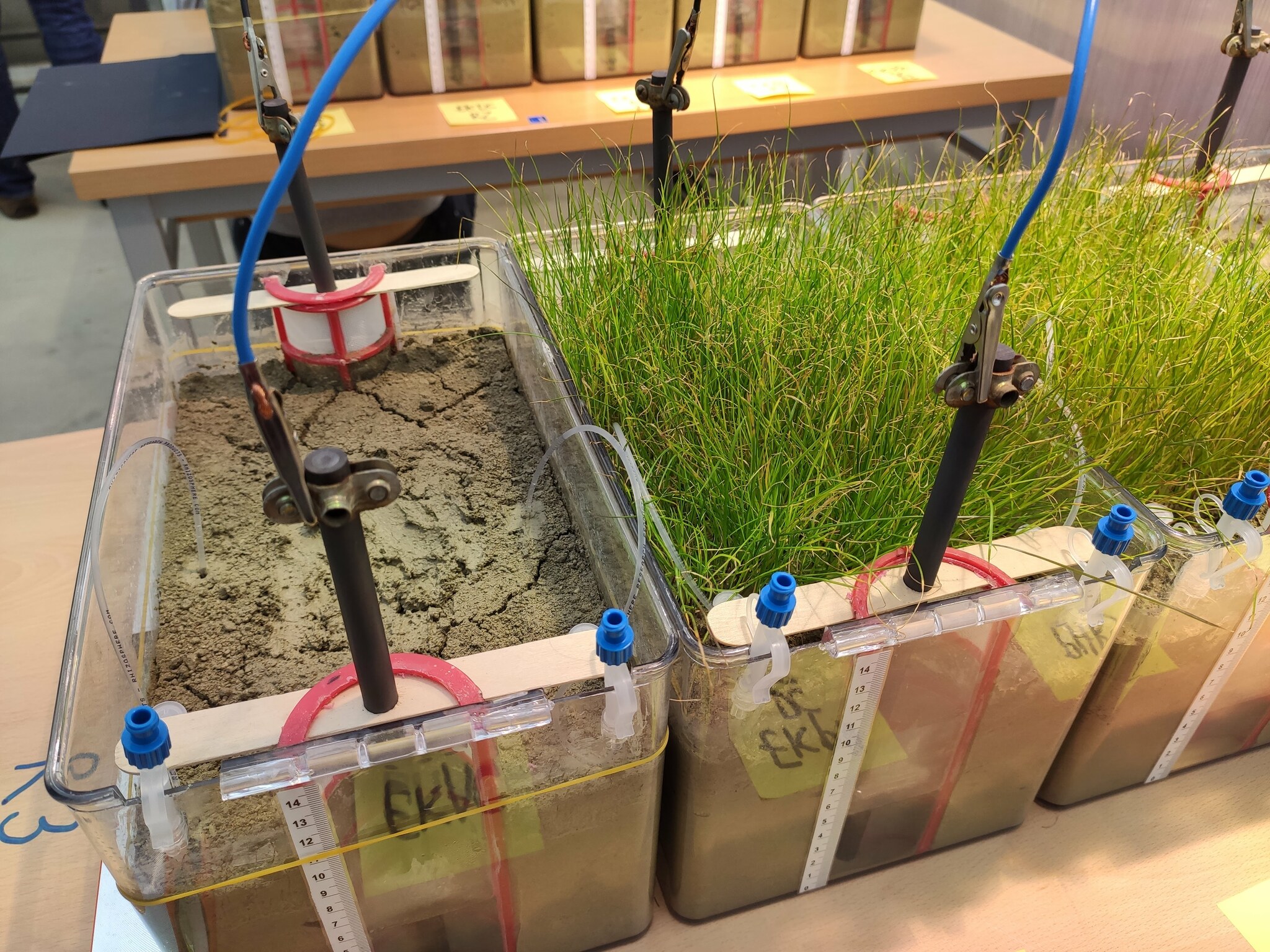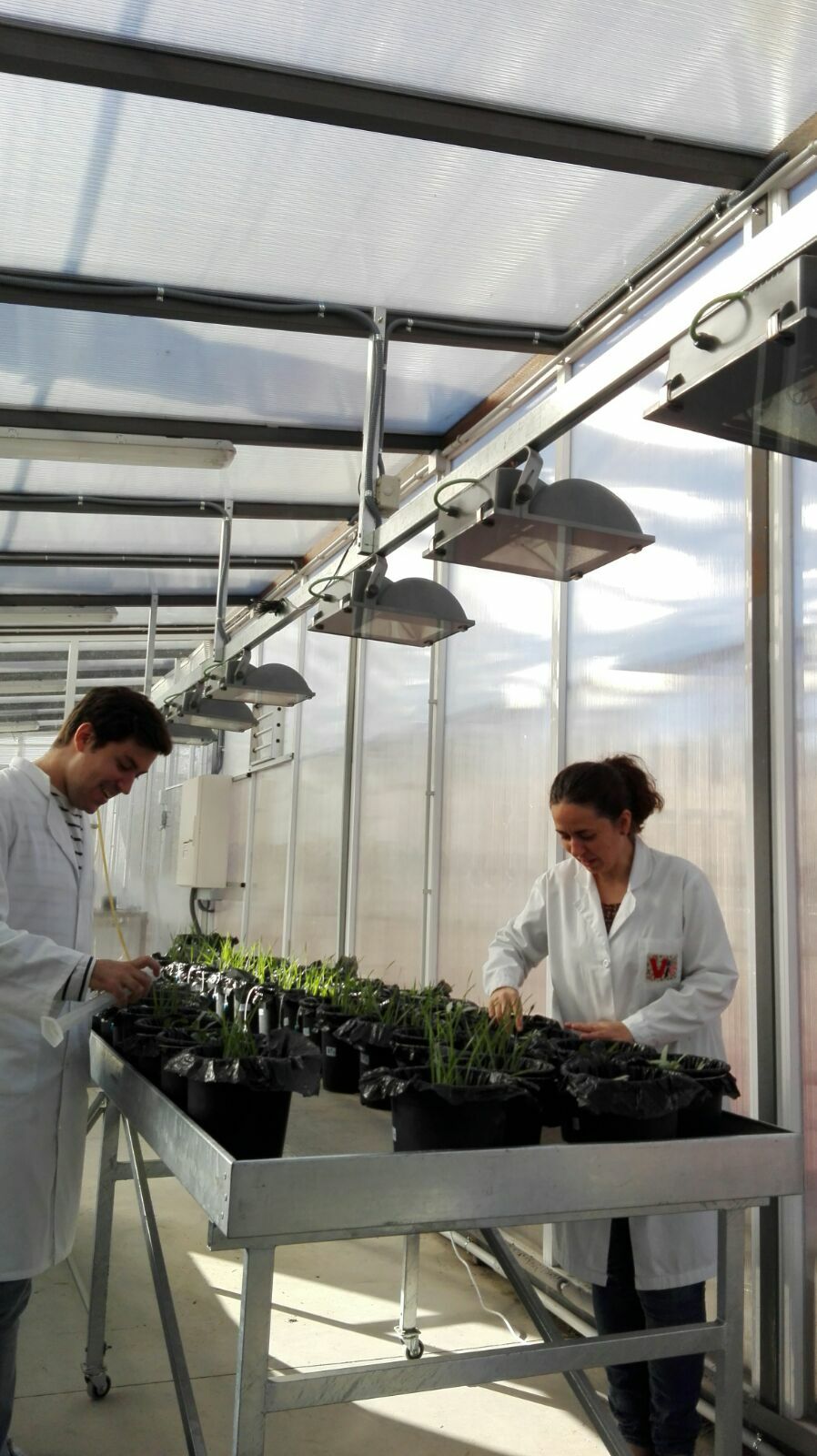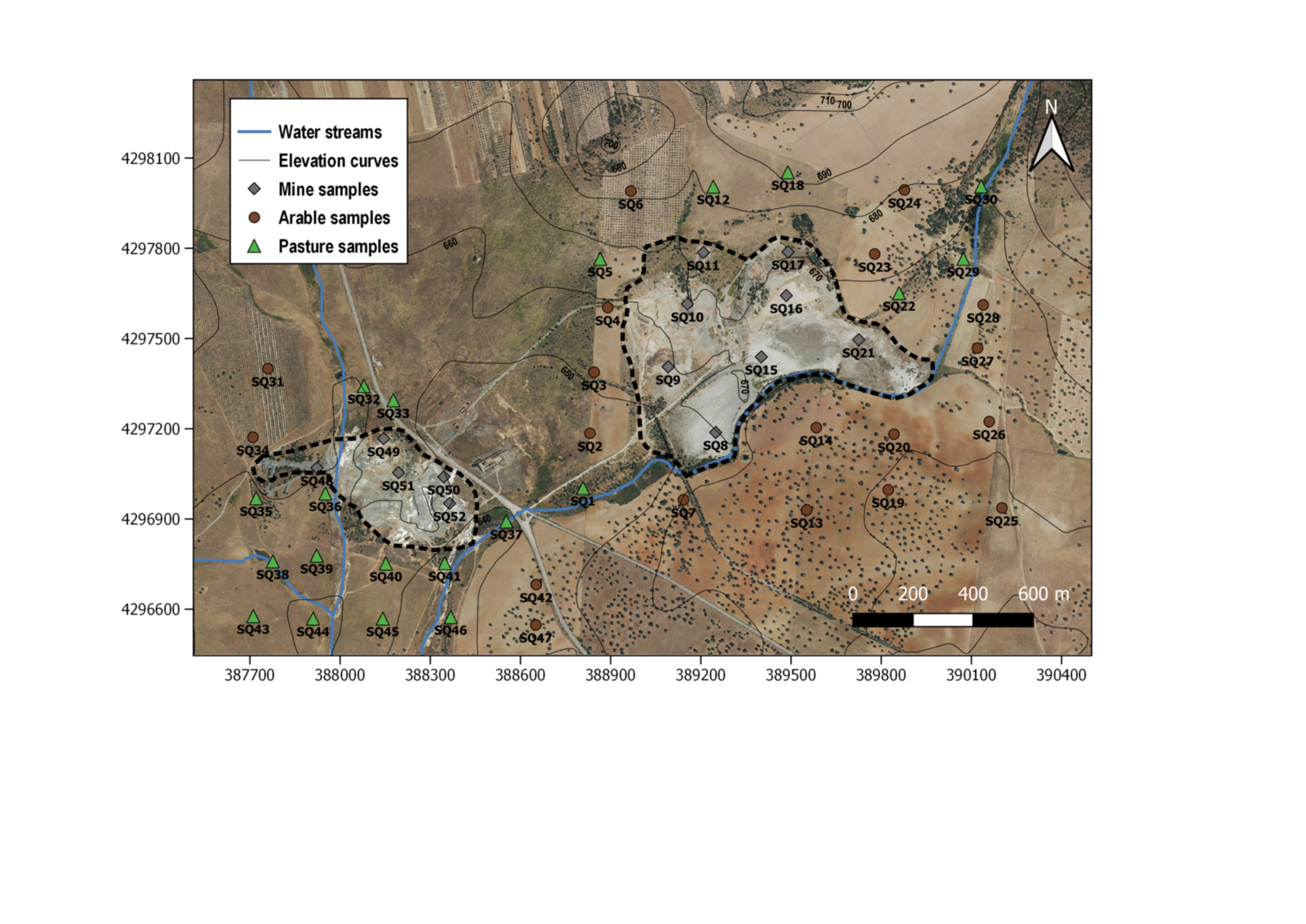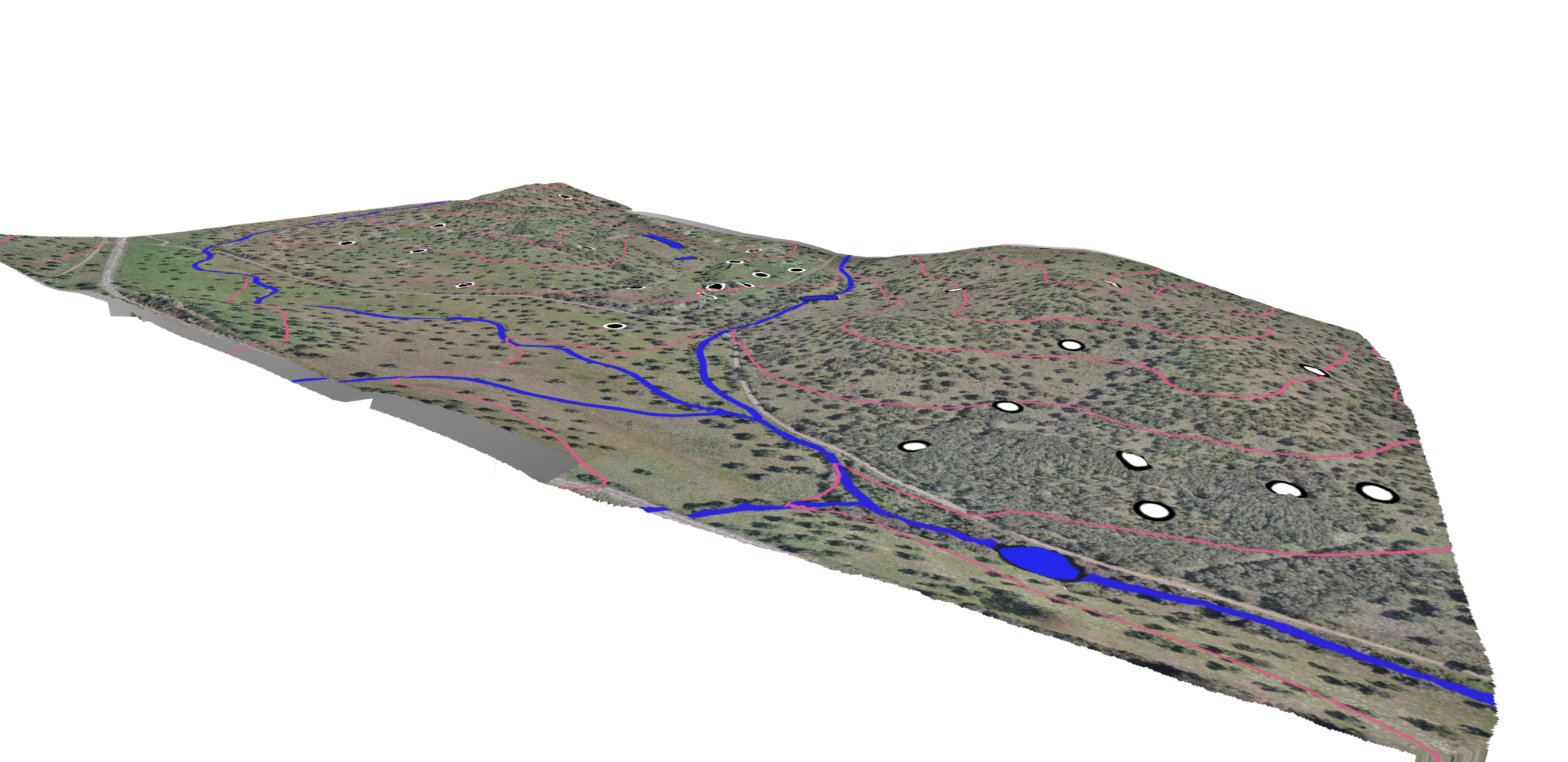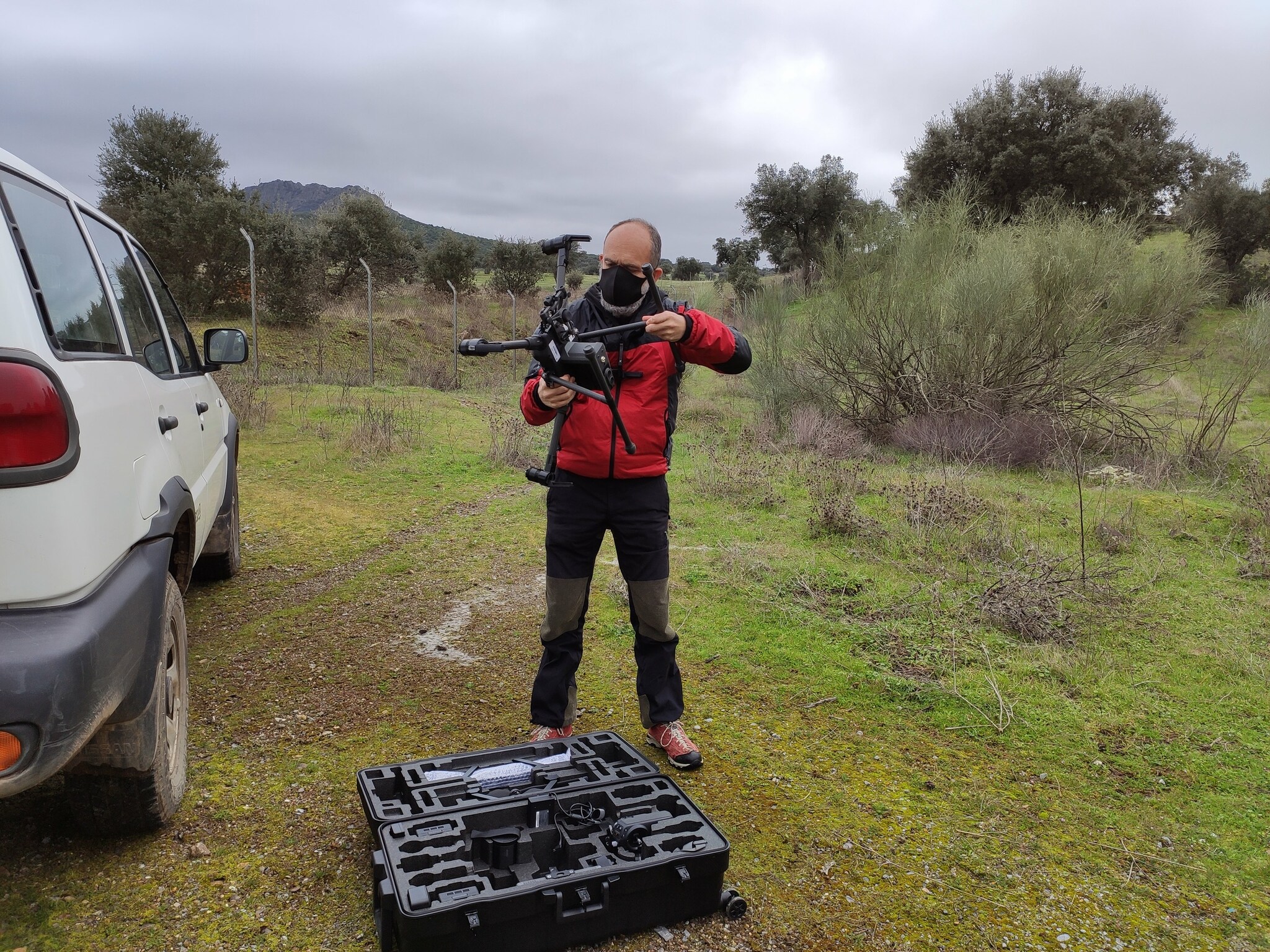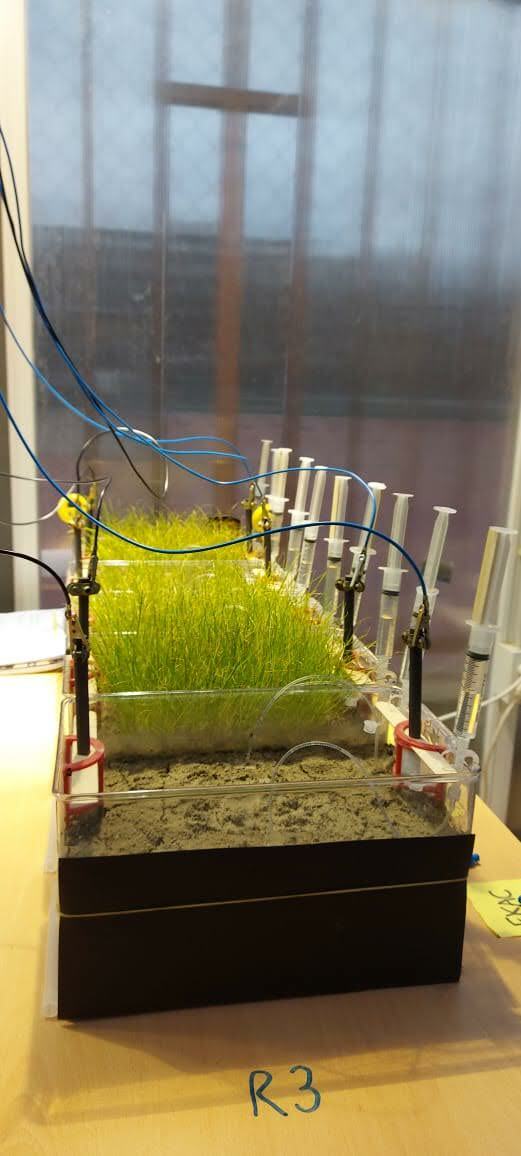Bio-electro MineR2
Abstract
After the communication by the Regional Goverment of Castilla-La Mancha of the resolution granting this project, work began on all activities to achieve the goals set. In this section, the main results derived from the project will be disseminated.
The pollution of the natural environment is one of the main concerns of today's society. Water pollution is especially important in Castilla-La Mancha, due to its scarcity, which could limit its future social and economic development; on the other hand, important specific problems of soil pollution are also detected, which is also a necessary and non-renewable natural resource. Some of the environmental problems described have their origin in a non-existent or ineffective management of waste from anthropic activities. The optimal management of this waste within the framework of the circular economy would imply both the mitigation of its environmental impact on ecosystems and human health, as well as the recovery of valuable resources contained therein.
Castilla-La Mancha has a long mining tradition dating back to Roman times. Since then, mining activity has generated a large amount of waste that, in many cases, was accumulated in the mining environments themselves without proper treatment. Currently, this waste is abandoned due to the cessation of activity of the companies that exploited these mining resources, with the consequent environmental problems that this generates. In accordance with the Strategic Plan of Non-Energy Mineral Resources of Castilla-La Mancha. Horizon 2020 (PERMINE), mining waste dumped in dumps, ponds or dams must be quantified and characterized, as well as evaluated the degree of recycling or reuse that could be made of them in order to recover them.
In this context, the Bio-electro MineR2 project aims to combine biotechnology and electrochemical treatments to recover usable resources, mainly metals and rare earths, contained in abandoned mining waste, thus achieving the environmental rehabilitation of contaminated environments through the application of circular economy principles. To achieve this goal, the Bio-electro MineR2 project will address the following aspects:
- The characterization of abandoned waste (acid drainage of mines, dumps and rafts) in metal mining environments of Castilla-La Mancha, in order to identify the most problematic types of waste from the environmental point of view, as well as those most susceptible to recovery through the technologies to be applied.
- Study of the technical feasibility of extracting metals and rare earths of interest from sludge deposited in mining ponds and abandoned dumps using bioleaching processes capable of generating a metal-rich effluent that will be treated later for the recovery of the metal.
- Study of the technical feasibility of the electrochemical recovery process of the metals contained in the acid mine drainage and in the liquid effluent, rich in metals, from the biolixiviation. These electrochemical technologies of recovery, electromigration and electrodeposition, will be complemented with the final treatment in artificial wetlands in order to achieve zero discharge of hazardous materials.
- Study of the technical feasibility of the application of phytoremediation, alone or in combination with electroremediation, for the decontamination of sludge from abandoned mining ponds and the eventual recovery of metals and rare earths accumulated in plant tissues.
- Economic and environmental analysis of the measures and technologies studied and realization of a combined treatment proposal for the decontamination of abandoned mining environments and the recovery of resources.
- The achievement of the established objectives will allow to have technologies that can provide a solution to the management of abandoned mining waste, thus reducing its impact on the environment, health and the economy, which would contribute to the progress and development of Castilla-La Mancha.
- The remarkable experience and multidisciplinarity of the team that makes up the application, as well as the participation of three EPOs, belonging to both the public and private sectors, guarantee an adequate transfer of results to the industrial sector (Minas de Almadén y Arrayanes S.A.), as well as to the interested public bodies (Confederación Hidrográfica del Guadiana and Junta de Comunidades de Castilla-La Mancha).
- Bio-electro MineR2 fits perfectly within the priority lines defined in the RIS3 of Castilla-La Mancha, being remarkable its link with Challenge 4. Achieve greater resource efficiency and Challenge 9. Sustainability: favoring the transition to a low-carbon economy in all sectors, more specifically with measure 9.1 Favor the development of the green economy "Promote and promote the proper management of waste, policies for the prevention and reuse of waste". Additionally, the project proposes the training of two new researchers at the doctoral level, which is in line with what was proposed in the RIS3 document in terms of staff training (Challenge 3. Promote HR in the knowledge economy).
Researchers
Francisco Jesús Fernández Morales
Full Professor. Department of Chemical Engineering. Institute of Chemical and Environmental Technology. Ciudad Real.
Luis Rodríguez Romero
Full Professor. Department of Chemical Engineering. School of Civil Engineeering. Ciudad Real.
José Villaseñor Camacho
Full Professor. Department of Chemical Engineering. Institute of Chemical and Environmental Technology. Ciudad Real.
Jacinto Alonso Azcarate
Full Professor. Department of Physical Chemistry. Faculty of Environmental Sciences and Biochemistry. Toledo.
Francisco Javier Lopez-Bellido Garrido
Asociated professor. Department of Plant Production and Agricultural Technology. School of Agricultural Engineers. Ciudad Real.
EPOS
The project is supported by a private company and two public bodies that participate as EPOS and that are involved in different stages of the value chain of the technology that is intended to be developed in Bio-electro MineR2. The entities correspond to both the private and public sectors:
Minas de Almadén y Arrayanes (MAYASA)
This private company is focused on the promotion of industrial projects and implementation of initiatives for the development of research projects and new technologies related to mining activity. It also carries out the agricultural and livestock exploitation of its rustic farms, as well as activities of recovery and maintenance of the historical heritage of the company and environmental rehabilitation of its surroundings.
Confederación hidrográfica del Guadiana (CHG)
It is the public body that regulates the hydrological network of the Guadiana river basin with the functions, among others, of managing the use of water resources and ensuring the maintenance of the good status of its water bodies.
Junta de Comunidades de Castilla-La Mancha (JCCM)
It is a public body of self-government of the autonomous community of Castilla-La Mancha.
Work packages
PT1 TECHNICAL COORDINATION OF THE PROJECT AND ECONOMIC MANAGEMENT.
T1.1: Management of scientific coordination.
T1.2: Management of staff recruitment.
T1.3: Procurement and expense management.
T1.4: Preparation of technical scientific monitoring reports for JCCM.
T1.5: Preparation of economic supporting reports for JCCM.
T1.6: Management of intellectual property.
PT2 MANAGEMENT OF THE KNOWLEDGE GENERATED.
T2.1: Coordination of knowledge obtained in the development of the project.
T2.2: Development and maintenance of website.
T2.3: Organization of scientific and technological workshop.
T2.4: Coordination of external communication of knowledge.
T2.5. Open dissemination of research results.
T2.6. Final report and preparation of upcoming projects.
PT3. CHARACTERIZATION OF ABANDONED CONTAMINATED ENVIRONMENTS.
T3.1 Collection of Additional Information and Access Permissions.
T3.2 Characterization of environmental waste.
T3.3 Selection of waste for experimentation.
PT4. DEVELOPMENT OF THE BIOLEACHING PROCESS FOR METAL EXTRACTION.
T4.1 Selection of the inoculum and bioleaching of dumps and mine tailings.
T4.2 Evaluation of ultrasound in the efficiency of the bioleaching process.
T4.3. Optimization of the operating conditions of the bioleaching process.
PT5. ELECTRODEPOSITION OF METALS CONTAINED IN EFFLUENTS.
T5.1. Design, assembly and commissioning of electrochemical systems.
T5.2. Study of the electromigration process.
T5.3. Study of the operating conditions in the electrodeposition process.
PT6. ENVIRONMENTAL TREATMENT OF MINING EFFLUENTS.
T6.1. Design, assembly and commissioning of constructed wetlands.
T6.2. Obtaining operation data for different operating conditions and comparison with electrowetland.
PT7. ENVIRONMENTAL RESTORATION THROUGH ELECTROKINETIC-ASSISTED PHYTOREMEDIATION TECHNIQUES.
T7.1. Evaluation of the restoration of mine tailings by phytoremediation.
T7.2. Evaluation of the restoration of mine tailings by electrokinetic-assisted phytoremediation.
PT8. ECONOMIC AND ENVIRONMENTAL EVALUATION AND PREPARATION OF METHODOLOGICAL GUIDE.
T8.1. Environmental monitoring of the impact of the techniques tested.
T8.2. Preparation of the Methodological Guide for Recovery.
Published papers
Medina-Díaz, H., Acosta, I., Muñoz, M., López-Bellido, F.J., Villaseñor, J., Llanos, J., Rodríguez, L., Fernández-Morales, F.J.
A classical modelling of abandoned mine tailings’ bioleaching by an autochthonous microbial culture
(2022) Journal of Environmental Management, 323, 116251.
DOI: 10.1016/j.envman.2022.116251
Rodríguez, L., González-Corrochano, B., Medina-Díaz, H., López-Bellido, F.J., Fernández-Morales, F.J., Alonso-Azcárate, J.
Does environmental risk really change in abandoned mining areas in the medium term when no control measures are taken?
(2022) Chemosphere, 291, 133129.
DOI: 10.1016/j.chemosphere.2021.133129
Potrykus, S., León-Fernández, L.F., Nieznański, J., Karkosiński, D., Fernandez-Morales, F.J.
The influence of external load on the performance of microbial fuel cells
(2021) Energies, 14 (3), art. no. 612.
DOI: 10.3390/en14030612
Potrykus, S., Mateo, S., Nieznański, J., Fernández-Morales, F.J.
The influent effects of flow rate profile on the performance of microbial fuel cells model
(2020) Energies, 13 (18), art. no. 4735.
DOI: 10.3390/en13184735
Conferences
29th Topical Meeting of the International Society of Electrochemistry, on-line, April 18-21 (2021) Recovery of metals from real acid mine drainage by means of bio-electro processes Yelitza Delgado, Javier Llanos, Francisco Jesús Fernández
Sustainable minerals`21, on-line, June 21-24 (2021) How the environmental risk evolves in the medium term in old metal mining areas Luis Rodríguez*, Beatriz González-Corrochano, Francisco J. López-Bellido, Hassay L. Medina, Jacinto Alonso-Azcárate, José Villaseñor and Francisco J. Fernández-Morales
ISWEE ‘21, on-line, October 15-18 (2021) Recovery of metals from mine tailings by electro-phytoremediation with ryegrass: alternate vs direct electric current Hassay Lizeth Medina-Díaz, Francisco Javier López-Bellido, Jacinto Alonso-Azcárate, Francisco Jesús Fernández-Morales, Jose Villaseñor, Luis Rodríguez
XIV Congreso Español de Tratamiento de Aguas, Sevilla, June 1-3 (2022) Acoplamiento de electrodiálisis y sistemas bio-electroquímicos para la recuperación de metales provenientes de drenaje ácido de mina real y la producción de energía. Yelitza Delgado, Javier Llanos, Francisco Jesús Fernández-Morales
8th European Bioremediation Conference, Chania, Creta, Greece, June 13-19 (2022) Coupling of Electrodialysis and Bio-electrochemical systems for Metal and Energy Recovery from Acid Mine Drainage Yelitza Delgado, Javier Llanos, Francisco Jesús Fernández-Morales
XVI Young Science Symposium, Ciudad Real, June 22-24 (2022) Effects of ultrasounds as a pretreatment in bioleaching of high polluted multi-metal mine tailings. Irene Acosta, Luis Rodríguez, José Villaseñor Influence of electric fields (AC and DC) to enhance phytoextraction of metals using Lolium perenne from multi-metal polluted mine-tailings Hassay Lizeth Medina-Díaz, Francisco Javier López-Bellido, Jacinto Alonso-Azcárate, Francisco Jesús Fernández-Morales, Jose Villaseñor, Luis Rodríguez
XLII Reunión del Grupo Especializado de Electroquímica de la RSEQ, Santander, July 6-8 (2022) Valorización de residuos mineros para la producción electroquímica de peróxido de hidrógeno a partir de materia vegetal contaminada Álvaro Ramírez, Martín Muñoz, Francisco Jesús Fernández, Javier Llanos Recuperación de metales de efluentes ácidos de mina por combinación de electrodiálisis y sistemas bio-electroquímicos Yelitza Delgado, Martín Muñoz, Francisco Jesús Fernández, Javier Llanos
Regional Goverment of Castilla-La Mancha
Enero 2020 a Diciembre 2023
122.800
